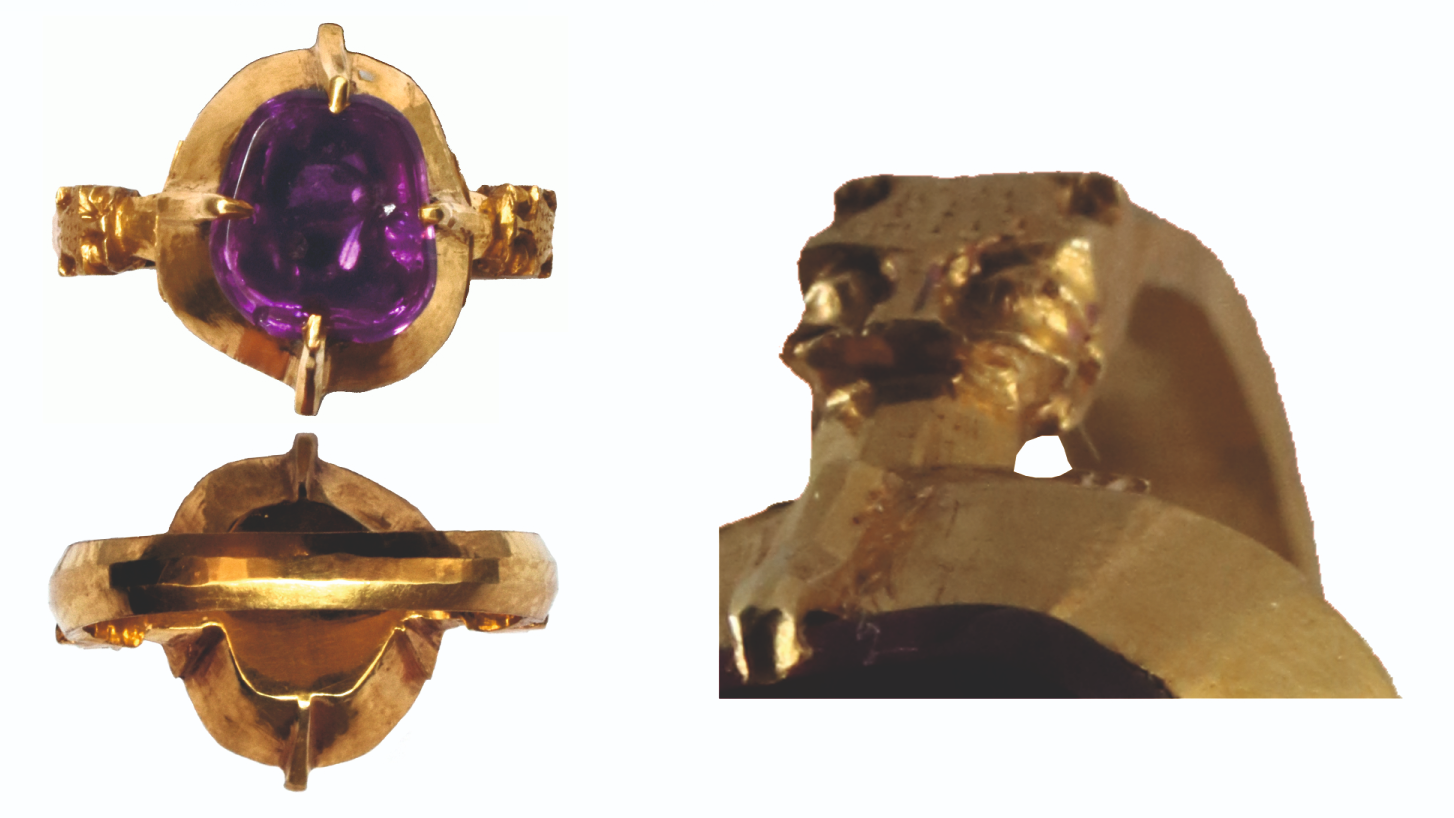A stunning gold ring lost at a medieval castle in Slovakia over 700 years ago has been rediscovered. The jewelry was likely worn by a bishop and includes an unusual Sri Lankan reddish-purple sapphire set in a band flanked by lions.
“Such a ring embodied deep spiritual meanings, protective powers, and societal status, allowing the wearer to display wealth while also seeking the divine protection associated with the symbols they bore,” Noémi Beljak Pažinová, an archaeologist at Constantine the Philosopher University in Nitra, Slovakia, told Live Science in an email.
Beljak Pažinová led a team of researchers in studying the ring, which was discovered at Zvolen Castle in central Slovakia. A treasure hunter found the ring in 2001, but archaeologists didn’t receive it until March 2023. The researchers published their findings online June 4 in the Journal of Archaeological Science: Reports.
Although rings were common accessories for both men and women in medieval Europe, the discovery of a gold ring with a valuable gemstone is extremely unusual, the researchers wrote in the study.
To analyze the ring, the researchers used nondestructive techniques, including Raman spectroscopy, which analyzes scattered light to figure out the chemical composition of a material, and micro-X-ray fluorescence spectroscopy, which uses X-rays to determine the elements in a material. They determined that the band was made from 18-karat gold and that the gem is a 2-carat corundum, a hard mineral that forms both rubies and sapphires.
“The primary difference between sapphires and rubies is their color,” Beljak Pažinová explained. Rubies are red because of the inclusion of chromium, while sapphires are found in a variety of colors. “We are inclined to believe that it is a sapphire,” Beljak Pažinová said.
Related: Medieval crowns of Eastern European royalty hidden in cathedral wall since World War II finally recovered
The trace elements present in the gemstone suggest that the corundum in the ring came from Sri Lanka, which has been an important source of the mineral since Roman times and is still known for its sapphire trade, the researchers said. The gemstone likely arrived in Central Europe via historical trade routes through Aleppo (in Syria) or Constantinople, the researchers wrote.
The lion on the gold band is also a rare example of a symbolic animal motif on a medieval ring, according to the study. Lions were popular heraldic animals in the Middle Ages and considered a sign of strength, courage and royalty. They were also a symbol of resurrection in Christianity.
“Bishops were required to wear such rings as an official symbol known as bishops’ rings of office,” Beljak Pažinová said, and therefore “we can consider a high ecclesiastical official as the bearer of this ring.”
But when the ring was lost and who originally wore it are still open questions. The castle fell into disuse in the second half of the 14th century, according to the researchers, and the ring was an accidental find from the residential courtyard. The style of the ring, though, places it around 1300.
The gold band with the reddish-purple sapphire and lion imagery is unique in medieval Europe, the researchers wrote.
